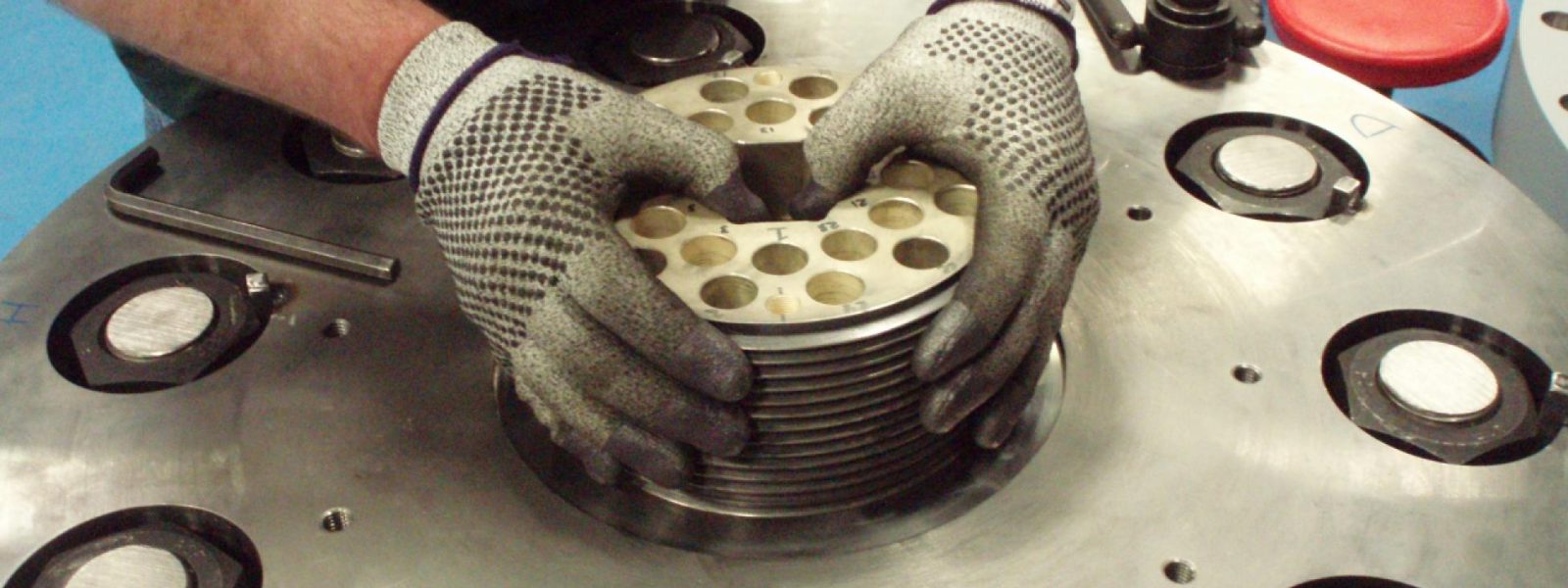―Lynne Degitz
US ITER is building one of the world’s largest and most powerful electromagnets to energize the ITER tokamak, a device that confines plasma in the shape of a doughnut. The 13 meter tall central solenoid will be located in the heart of the ITER fusion experiment. In order to maintain structural integrity in the face of thousands of tons of force, the solenoid requires a specially designed support structure to hold the electromagnet in place. ITER, now under construction in France, is an international experimental facility designed to demonstrate the scientific and technological feasibility of fusion power for the commercial power grid.”
“With a typical solenoid, the electromagnetic forces pull the magnet together. But the ITER central solenoid is made of 6 different modules which are not all pulling together at the same time. They can be opposing each other with large magnetic forces,” notes Bob Hussung, the lead mechanical engineer for central solenoid structures at the US ITER project managed by Oak Ridge National Laboratory.
The forces affecting the central solenoid can be very large, in the range of 60 meganewtons, or over 6,000 tons of force. “For perspective, the Space Shuttle at lift-off had about 30 meganewtons of thrust. So we are handling about two Space Shuttles’ worth of magnetic thrust,” says Hussung. “With ITER, we’re avoiding a launch! We’re dealing with all of these magnetic forces, and we have to hold the solenoid in a very accurate position.”
To prevent movement of the modules in the solenoid during tokamak operations, the support structure is designed like a large cage, with 18 tie-plates outside the modules and 9 inside, plus lower and upper key blocks which connect to the tie-plates and attach the entire structure to the ITER tokamak. The complete central solenoid assembly weighs 1000 tonnes.

Two approaches are being studied to determine the best way to fabricate the long tie-plate structures. A welded tie-plate, manufactured by Major Tool, Inc. in Indianapolis, Ind., has performed well in initial testing, with results within the ITER requirement margin. A single piece tie-plate, forged by Kind, LLC in Gummersbach, Germany and machined by G&G Steel, Inc. in Russellville, Ala., is also being fabricated; testing will begin in May.
Hussung observes, “The big question for the one-piece tie-plate was ‘can you fabricate it.’ The answer is clearly yes, it is forgeable. Now the mechanical properties need to be confirmed through testing at liquid helium temperatures.”

During assembly of the ITER tokamak, the first step for the central solenoid is the installation of the lower key block, which are 5-6 tonnes each and about the size of a large office desk. The modules will then be stacked on the key blocks and surrounded by the support cage. In addition to supporting the entire solenoid, the key blocks also tie the central solenoid magnet system to the toroidal field magnet system.
The cage around the central solenoid is under extreme tension which pre-loads the modules with forces which squeeze the modules together. This pre-compression is performed at room temperature, but the central solenoid will ultimately be operating at about 4 degrees above absolute zero—even as the plasma contained by magnetic fields in the tokamak reaches temperatures hotter than the surface of the sun. The solenoid modules, which include superconducting cable surrounded by a stainless steel jacket and insulation, have to tolerate this large pre-compression.
Hussung explains, “As cooling occurs, the modules and the tie-plates shrink at different rates, so we must take this into account so that there is still adequate pre-compression during operation. When cool down occurs, the mechanical properties of materials increase, so the structure and modules are actually even more capable of withstanding the extreme forces than at room temperature.”
“The structure must be designed to take both the conditions at pre-load and after cool down, which is at 4 degrees absolute,” explains Kevin Freudenberg, an engineer with US ITER who heads the analysis team for the central solenoid components.
Steve Litherland, a manufacturing engineer with US ITER, adds “We also have to maintain at least 15 meganewtons of contact loading between each of the solenoid modules at all times. The modules are trying to separate at certain times during operation, as they are pushed by large magnetic forces.”
The design of the pre-compression system also makes it possible to increase the pre-compression in between tokamak operation periods, so that that the correct amount of compression is maintained. Over time, materials tend to “relax” and pre-compression decreases when “creep”, or compression, of the materials of the solenoid occurs.
Key components of the pre-compression system are multi-jackbolt tensioners, which are often known by their trademarked industry name Supernuts®. The support structure pre-compression system will use 45 Supernuts®, each 190 mm in diameter. These pre-compression components will be screwed into the key blocks at the top of the solenoid structure.
Ultimately, all of the magnetic forces from all the magnets in the ITER tokamak have to balance for machine stability and operation. The external forces on the central solenoid are mostly up and down, so the structure is designed to minimize vertical motion. Additional stability is provided by upper support structures, which help to keep the solenoid centered as sideway forces are encountered from the poloidal field magnet system.
US participation in ITER is supported by the DOE Office of Science and managed by Oak Ridge National Laboratory in Tennessee, with contributions by partner labs Princeton Plasma Physics Laboratory and Savannah River National Laboratory. For more information, visit usiter.ornl.gov.
Media Contact: Lynne Degitz
